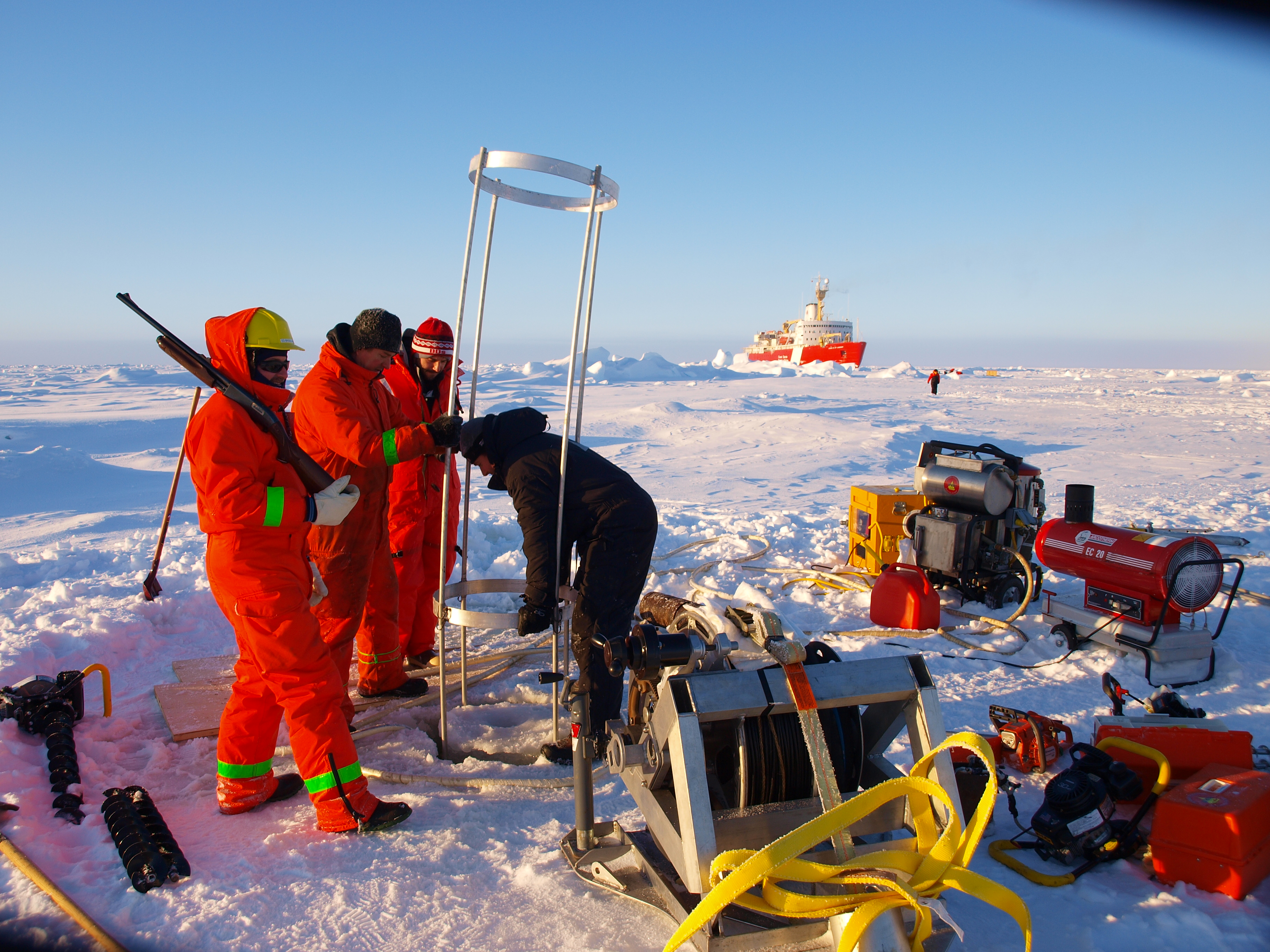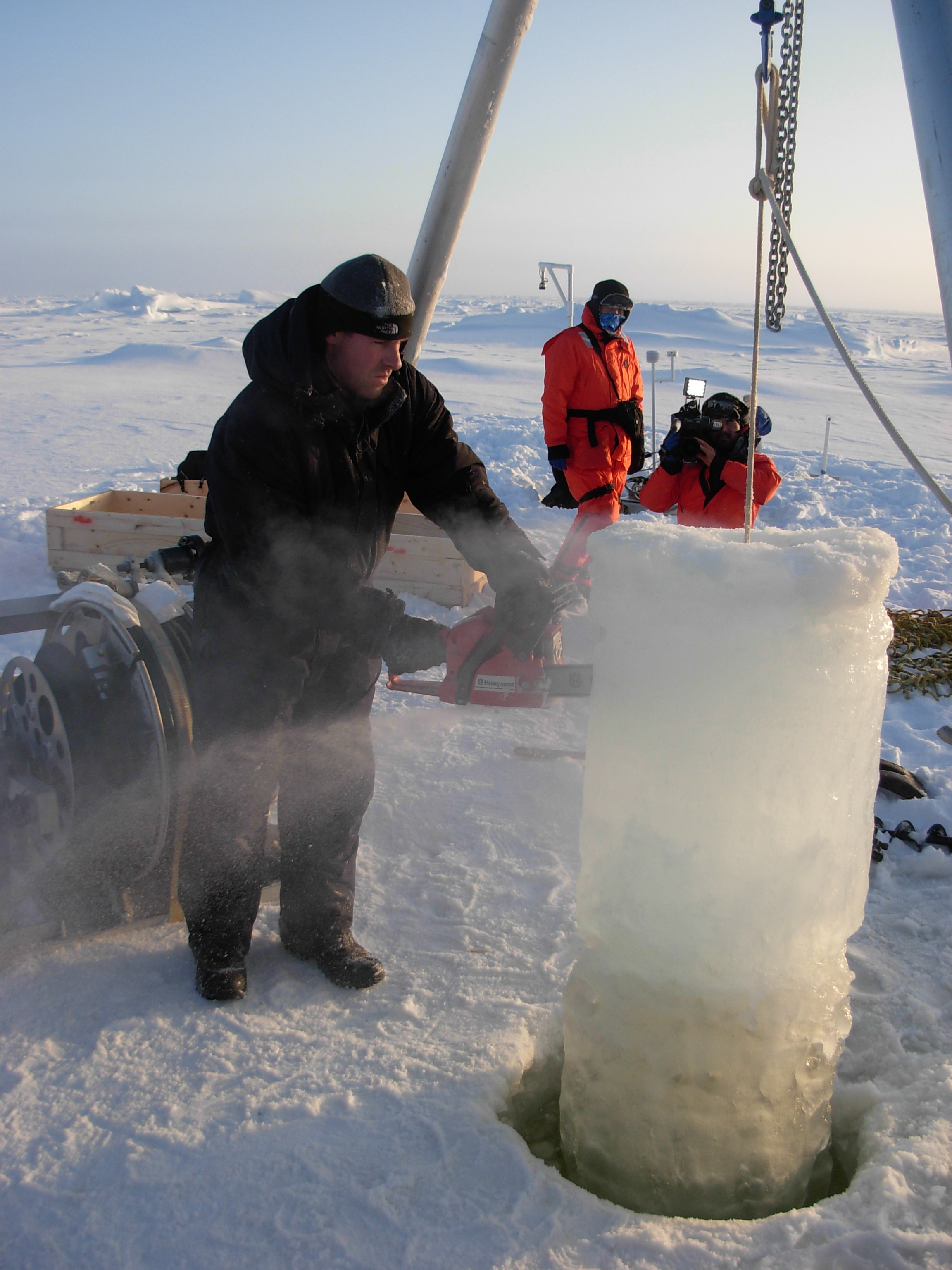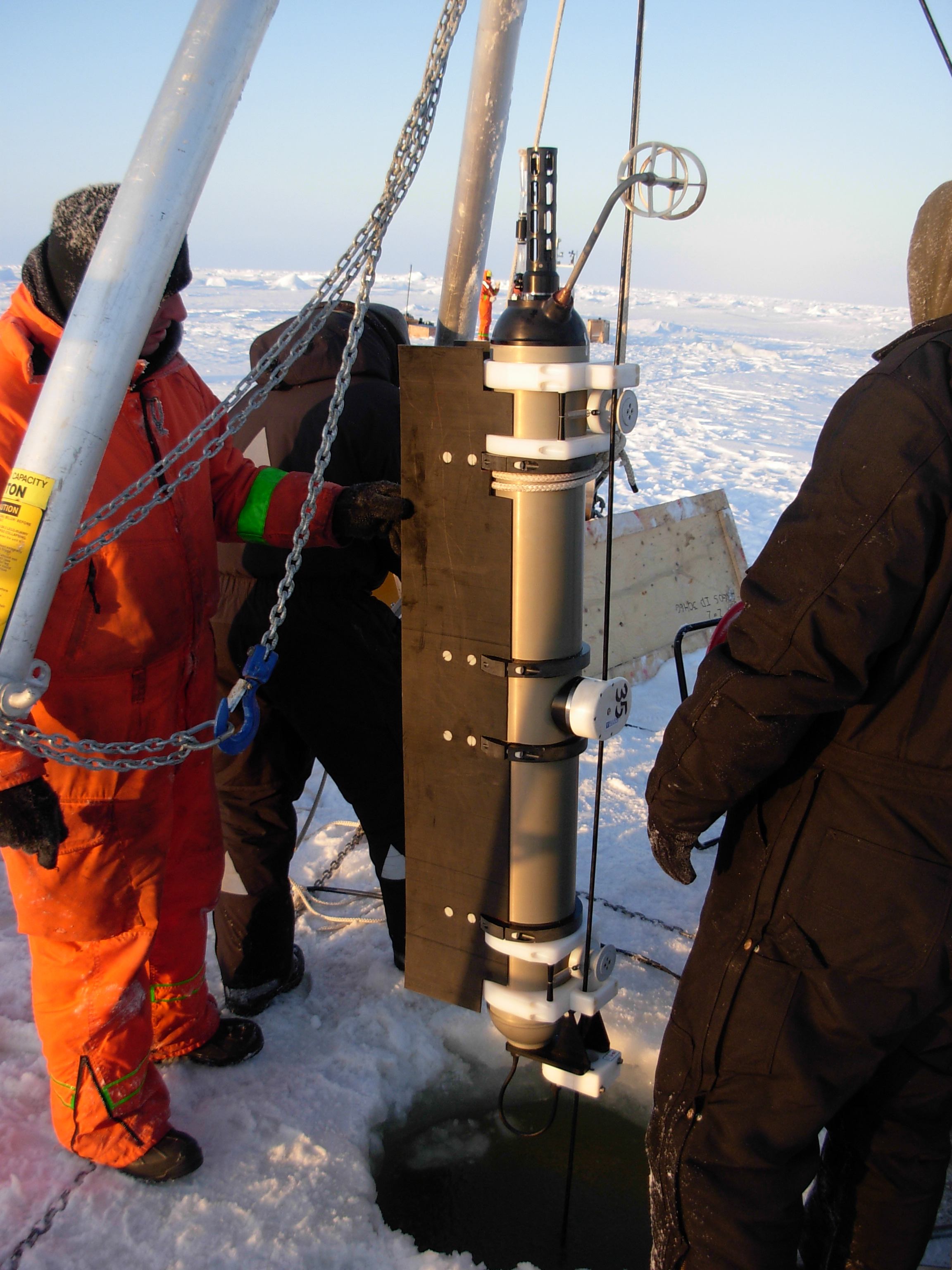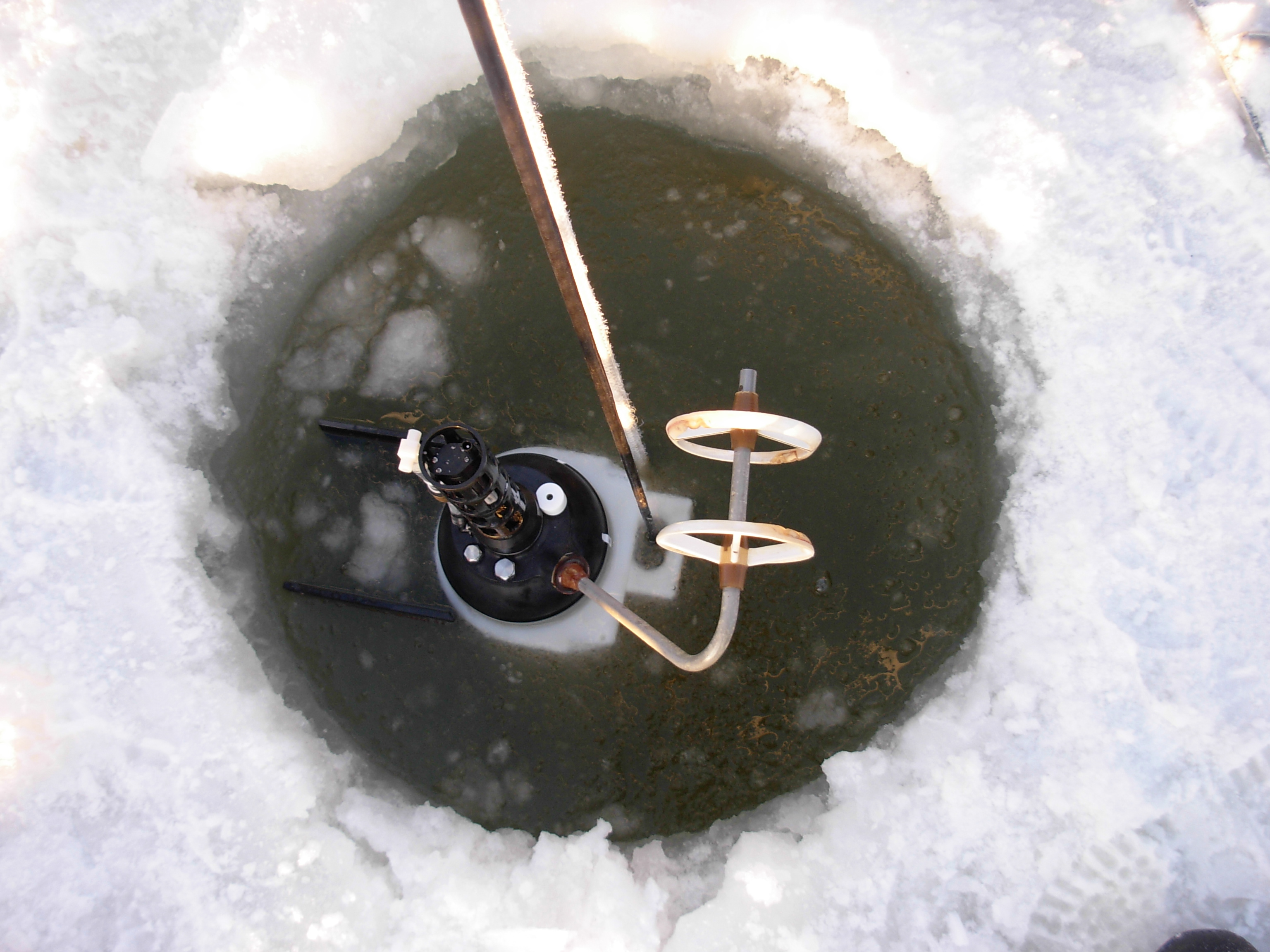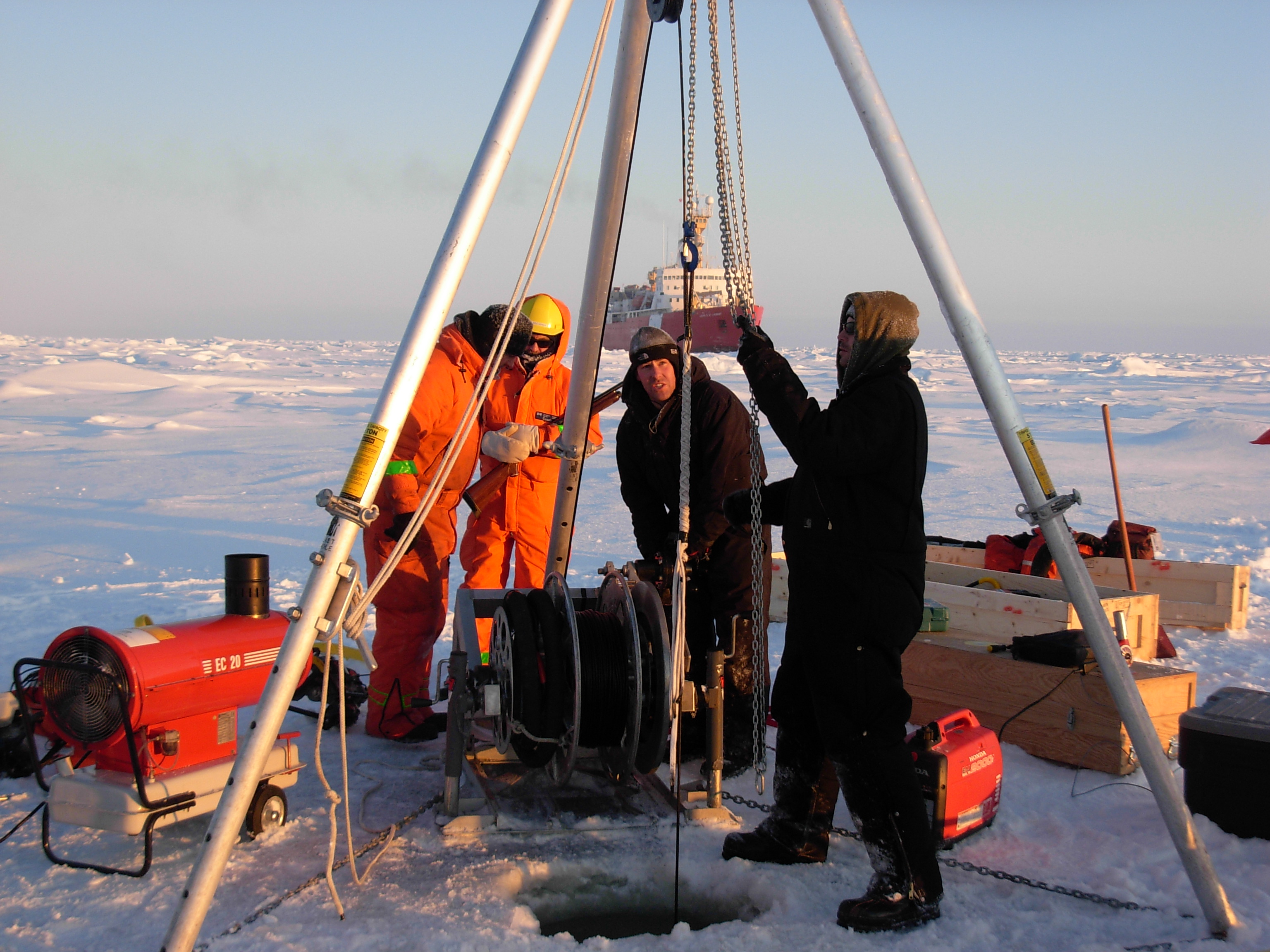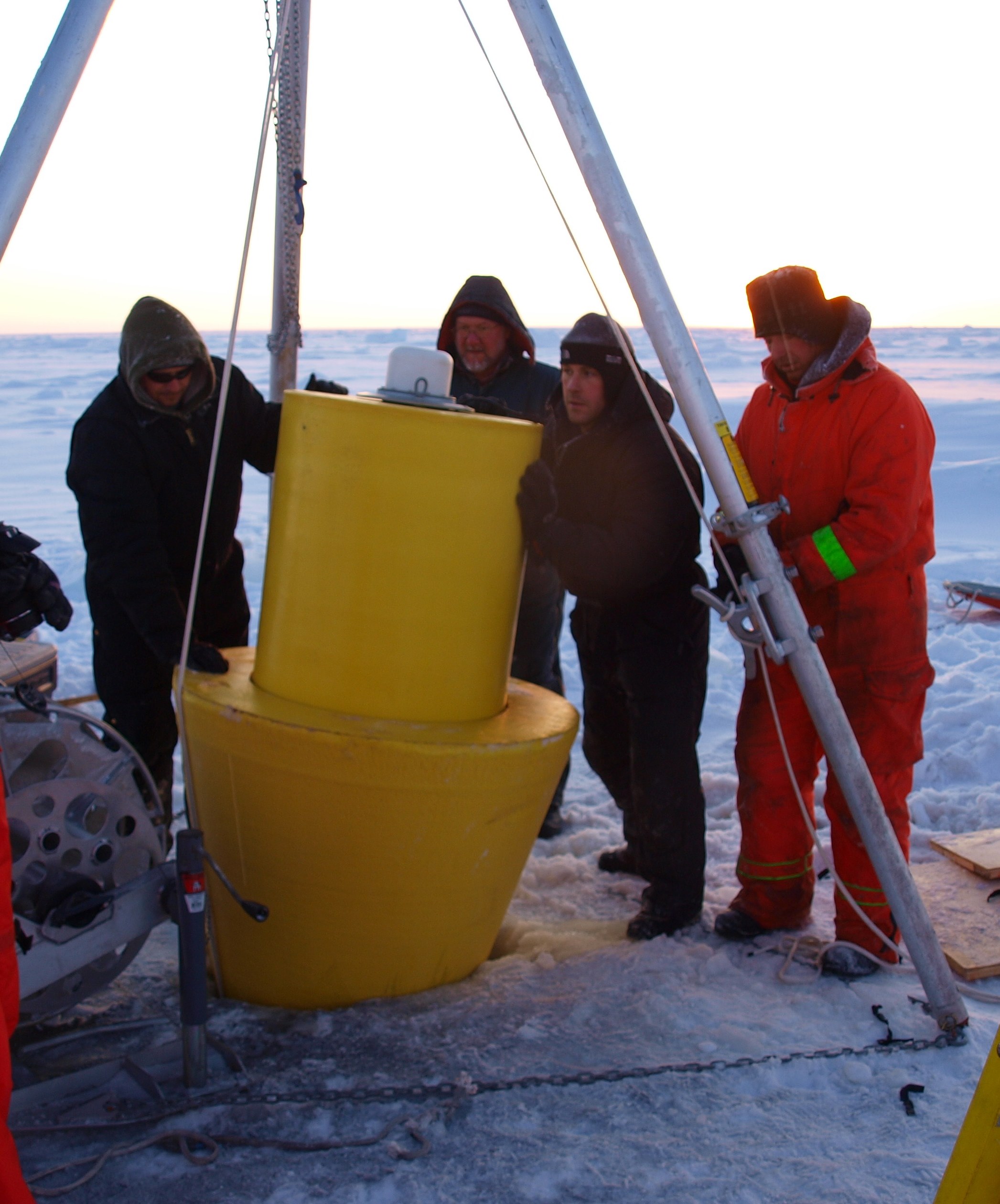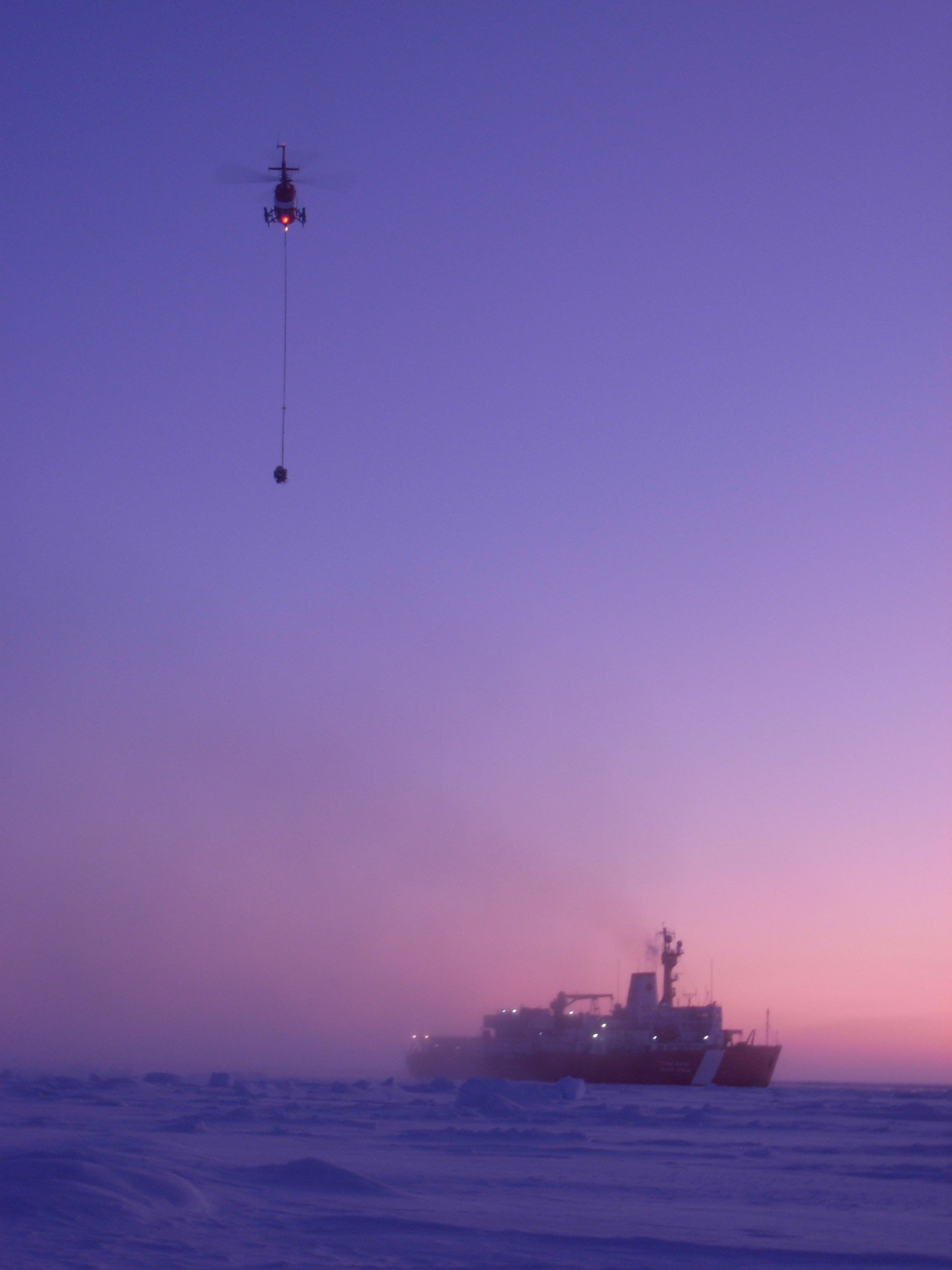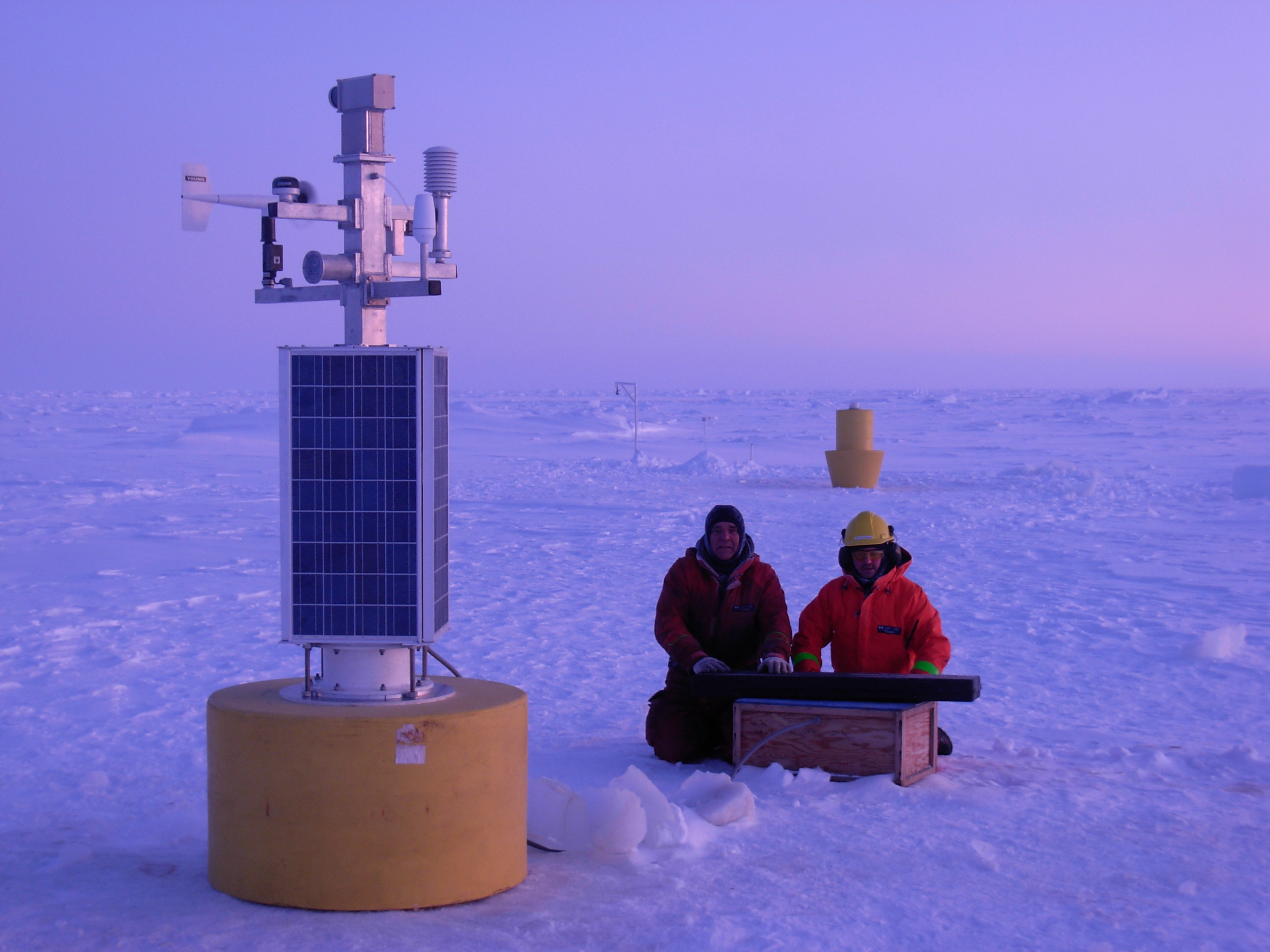ITP35 Deployment Operations
The third buoy deployment on the JOIS 2009 cruise was an Ice-Based Observatory (IBO) deployment consisting of an Ice-Mass Balance (IMB) buoy, atmospheric chemistry O-Buoy, and the first prototype ITP-V (ITP with Velocity) outfit with a Modular Acoustic Velocity Sensor (MAVS). During the morning reconnaissance by helicopter, it was difficult to visually estimate the thickness of the ice, because everything was covered by 6 to 12" of snow. We landed on a large floe with two relatively large plains (>100 m in diameter), but the first site surveyed was only 1.5 m thick. Unlike the large solid multiyear floes that existed in past years, this floe consisted of many small broken pieces that were refrozen together into a large mass. Taking care to avoid stepping into the refrozen cracks beneath the snow, the second plain was surveyed and found to be 2.5 m thick, so the IBO was deployed there while other scientists conducted detailed measurements about the ice floe.
In order to keep the MAVS probe pointed into the current to measure undisturbed flow and minimize Strouhal oscillation, fins were added to the profiler body (Thwaites et al., 2011) so that a 24” diameter hole through the ice was required for the deployment. To drill this hole, and the hole for the 14” diameter O-buoy tube, a hot water drill ring apparatus was used, and the ice core removed with chainsaws. The hole for the O-Buoy was drilled first, took about an hour to complete, and the O-buoy lowered into the hole using the helicopter, and the superstructure was subsequently assembled on the ice.
The hole for ITP 35 also took about an hour to complete, and the ice core that was removed from the hole was without voids, attesting to the solidness of the site. While the day was brighter than during the previous day’s deployment operations, air temperature dropped from -8 °C at the start to -18 °C by the end creating some mechanical difficulties. The profiler was exposed to the cold for nearly an hour while the fin was assembled, which took extra time as some of the plastic fin bolts became brittle and broke so had to be replaced and gingerly tightened so as not to crack. Fortunately, the inductive modem test passed after it was in the water and when the buoy was deployed.
The IMB was deployed concurrent with the ITP-V and after eight hours all ice operations were completed, and all personnel and gear were transported back to the ship as daylight waned.
More information and photos on the deployment operation are also available at: https://www.whoi.edu/page.do?pid=67298
References:
Thwaites, F.T., R. Krishfield, M-L. Timmermans, J.M. Toole, and A.J. Williams 3rd, 2011. Noise in Ice-Tethered Profiler and McLane Moored Profiler velocity measurements. Proceedings of IEEE/OES/CWTMC Tenth Working Conference on Current, Wave, and Turbulence Measurement Technology, Monterey, CA, 20-23 March 2011, 8 pages.
